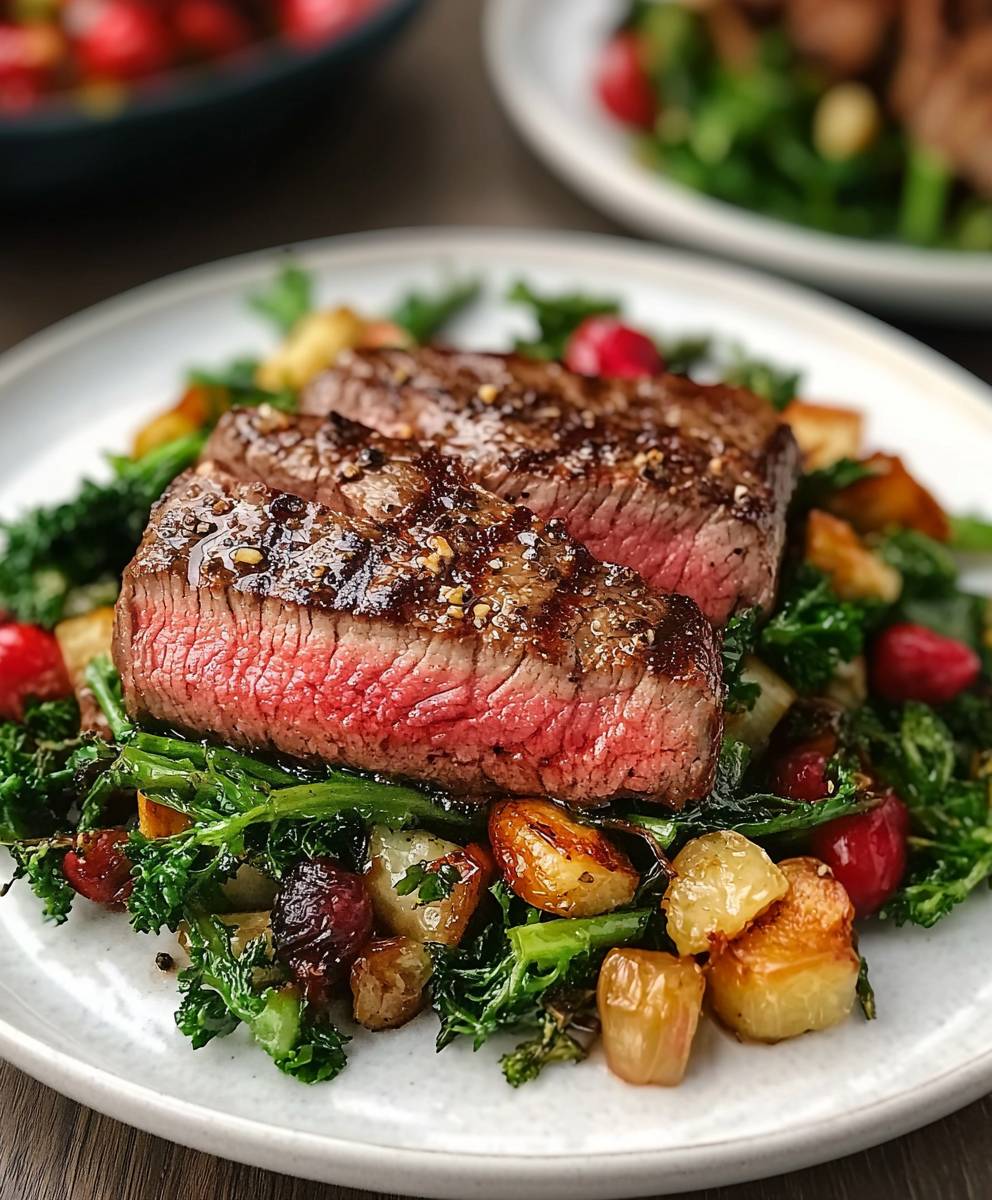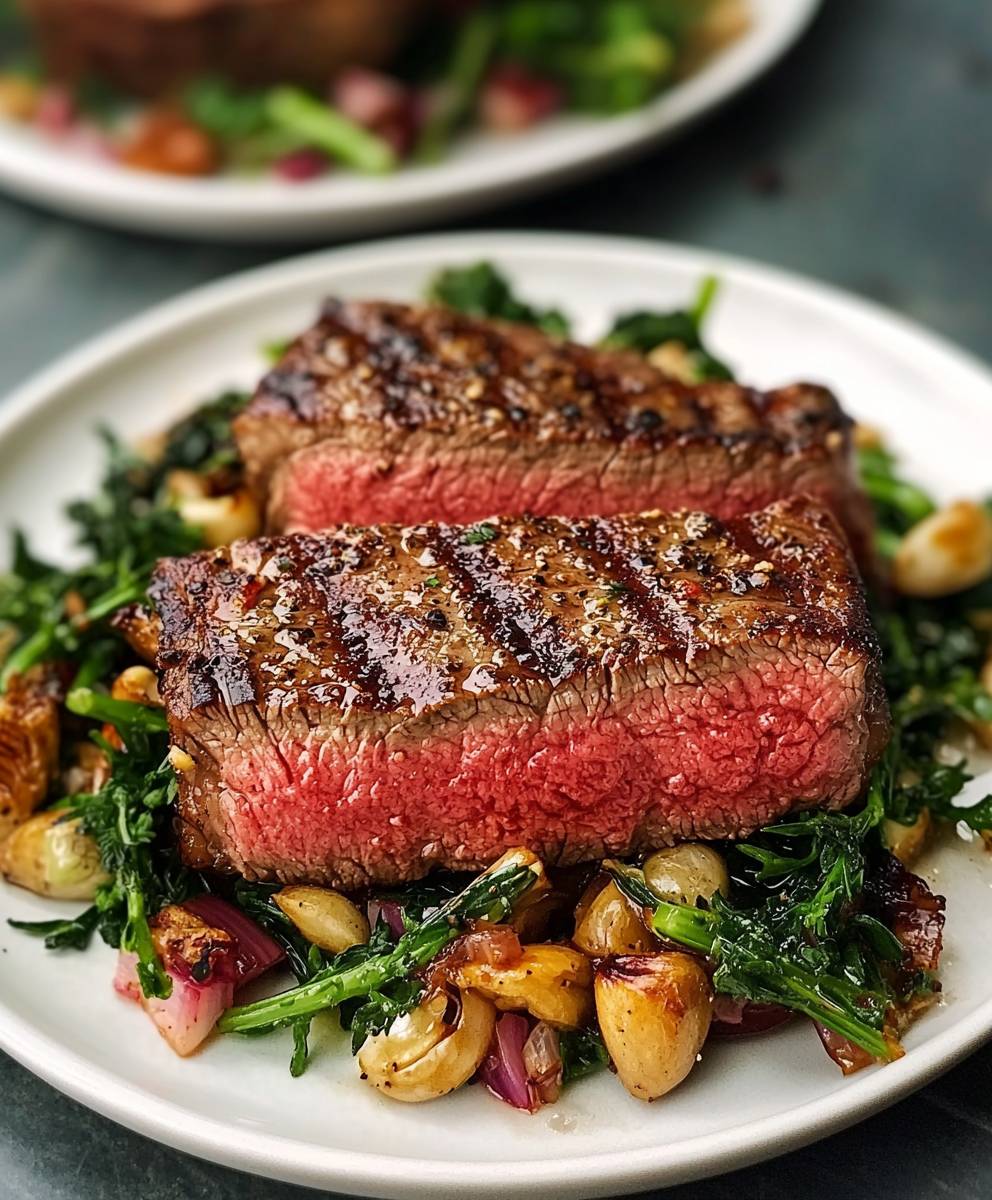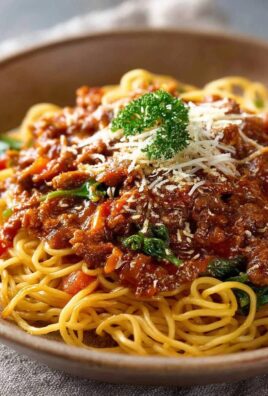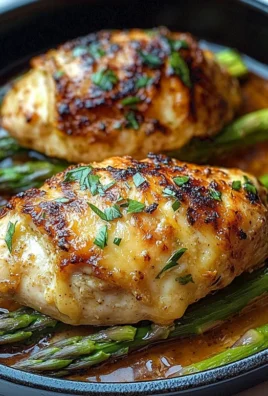Thick steak reverse sear: Prepare to unlock the secret to steakhouse-quality perfection right in your own kitchen! Imagine sinking your teeth into a steak that’s unbelievably tender, boasting a perfectly browned crust and a rosy, edge-to-edge doneness that will make your taste buds sing. Forget everything you thought you knew about grilling or pan-searing; the reverse sear method is a game-changer.
While the exact origins of the reverse sear are debated, its popularity has exploded in recent years as home cooks and professional chefs alike have discovered its unparalleled ability to deliver consistent and impressive results. It’s a technique rooted in the principles of low and slow cooking, allowing the steak to gently come up to temperature before being seared at high heat for that coveted Maillard reaction that beautiful browning that adds so much flavor.
People adore the reverse sear method for several reasons. First, it’s incredibly forgiving, making it easier to achieve your desired level of doneness without the risk of overcooking. The even cooking throughout the steak eliminates the dreaded gray band often found in traditionally cooked steaks. Second, the sear creates an intensely flavorful crust that contrasts beautifully with the tender interior. Finally, it’s surprisingly simple! With a little patience and a reliable thermometer, you can consistently create restaurant-worthy steaks that will impress your family and friends. So, let’s dive in and learn how to master the art of the thick steak reverse sear!
Ingredients:
- 1 (1.5-2 inch thick) Ribeye Steak (or your preferred cut, like New York Strip or Filet Mignon), approximately 1.5-2 pounds
- 2 tablespoons Olive Oil (or other high-smoke point oil like avocado or grapeseed oil)
- 2 tablespoons Unsalted Butter
- 4 cloves Garlic, minced
- 2 sprigs Fresh Rosemary
- 2 sprigs Fresh Thyme
- Kosher Salt, to taste (approximately 1-1.5 tablespoons)
- Freshly Ground Black Pepper, to taste (approximately 1 teaspoon)
Preparing the Steak:
- Pat the steak dry: This is crucial for achieving a good sear. Use paper towels to thoroughly dry the surface of the steak. Moisture is the enemy of a beautiful crust!
- Season generously: Don’t be shy with the salt and pepper! Season the steak liberally on all sides with kosher salt and freshly ground black pepper. The salt will not only enhance the flavor but also help to draw out moisture, further aiding in the searing process. I like to season at least 45 minutes before cooking, or even better, the night before and let it sit uncovered in the fridge. This allows the salt to penetrate the meat and tenderize it.
Reverse Searing: Low and Slow
- Preheat your oven: Preheat your oven to a low temperature, ideally 250°F (121°C). This low temperature is key to the reverse sear method, allowing the steak to cook evenly from edge to edge without overcooking the outside.
- Place the steak on a wire rack: Place the seasoned steak on a wire rack set inside a baking sheet. This allows for even air circulation around the steak, promoting even cooking.
- Cook in the oven: Cook the steak in the preheated oven until it reaches an internal temperature of 115-120°F (46-49°C) for medium-rare. Use a reliable meat thermometer to monitor the internal temperature. The cooking time will vary depending on the thickness of the steak, but it typically takes about 30-45 minutes. For medium, aim for 125-130°F (52-54°C). For medium-well, aim for 135-140°F (57-60°C). Remember, the internal temperature will continue to rise slightly as the steak rests.
- Rest the steak: Once the steak reaches the desired internal temperature, remove it from the oven and let it rest for at least 10 minutes. This is a crucial step! Resting allows the juices to redistribute throughout the steak, resulting in a more tender and flavorful final product. Don’t skip this step!
Searing the Steak: High Heat Finish
- Prepare for searing: While the steak is resting, prepare your searing setup. Place a heavy-bottomed skillet (cast iron is ideal) over high heat. You want the skillet to be screaming hot before you add the steak.
- Add oil to the skillet: Once the skillet is smoking hot, add the olive oil (or your preferred high-smoke point oil). The oil should shimmer and be very hot.
- Sear the steak: Carefully place the rested steak in the hot skillet. Sear for 1-2 minutes per side, or until a deep, golden-brown crust forms. Use tongs to flip the steak, ensuring even searing on all sides. Don’t overcrowd the pan; if necessary, sear the steak in batches.
- Add butter, garlic, and herbs: After searing both sides, add the butter, minced garlic, rosemary sprigs, and thyme sprigs to the skillet. As the butter melts, tilt the skillet and use a spoon to baste the steak with the melted butter, garlic, and herbs. This will infuse the steak with flavor and create an even more delicious crust. Baste for about 30-60 seconds per side. Be careful not to burn the garlic.
- Check the internal temperature: Use your meat thermometer to double-check the internal temperature of the steak. It should be at your desired final temperature (e.g., 130-135°F for medium-rare). Remember that the temperature will continue to rise slightly as the steak rests again.
- Rest again (briefly): Remove the steak from the skillet and place it on a cutting board. Let it rest for another 5 minutes before slicing. This second rest is shorter than the first, but it’s still important to allow the juices to settle.
Slicing and Serving:
- Slice against the grain: Use a sharp knife to slice the steak against the grain. This will shorten the muscle fibers, making the steak more tender and easier to chew.
- Serve immediately: Serve the sliced steak immediately. You can drizzle the pan juices over the steak for added flavor.
Tips for Success:
- Choose the right cut: A well-marbled ribeye is my personal favorite for reverse searing, but New York strip or filet mignon also work well. Look for a steak that is at least 1.5 inches thick.
- Use a reliable meat thermometer: A meat thermometer is essential for ensuring that the steak is cooked to your desired doneness. I recommend using a digital thermometer for accuracy.
- Don’t overcrowd the pan: Overcrowding the pan will lower the temperature of the oil and prevent the steak from searing properly. If necessary, sear the steak in batches.
- Use high heat: The skillet should be screaming hot before you add the steak. This will ensure a good sear.
- Don’t be afraid of the smoke: A little smoke is a good thing! It means that the skillet is hot enough to sear the steak. Just make sure to have good ventilation.
- Rest, rest, rest: Resting the steak is crucial for achieving a tender and juicy final product. Don’t skip this step!
- Experiment with flavors: Feel free to experiment with different herbs and spices. Garlic powder, onion powder, paprika, and chili powder are all great additions.
- Consider a compound butter: For an extra layer of flavor, try topping the steak with a compound butter. Mix softened butter with herbs, garlic, and other seasonings.
Troubleshooting:
- Steak is not searing properly: Make sure the skillet is hot enough and that the steak is dry. You may also need to add more oil to the skillet.
- Steak is overcooked: Use a meat thermometer to monitor the internal temperature of the steak. Remove the steak from the oven when it reaches the desired internal temperature.
- Steak is tough: Make sure to slice the steak against the grain. You may also need to marinate the steak before cooking.
- Garlic is burning: Add the garlic to the skillet after the steak has been searing for a minute or two. This will prevent the garlic from burning.
Serving Suggestions:
- Serve with roasted vegetables, such as asparagus, broccoli, or Brussels sprouts.
- Serve with mashed potatoes or sweet potato fries.
- Serve with a side salad.
- Top with a compound butter or a sauce, such as chimichurri or béarnaise.
Variations:
- Garlic Herb Butter: Increase the amount of garlic and herbs in the butter basting mixture.
- Spicy Steak: Add a pinch of red pepper flakes to the seasoning for a little heat.
- Coffee Rub: Combine ground coffee, brown sugar, paprika, garlic powder, onion powder, salt, and pepper for a flavorful rub.
Storage:
- Store leftover steak in an airtight container in the refrigerator for up to 3 days.
- Reheat steak in a skillet over medium heat or in the oven at 300°F (149°C).

Conclusion:
And there you have it! This reverse sear method for a thick steak is truly a game-changer, and I wholeheartedly believe it’s a must-try for any steak lover. Forget everything you thought you knew about achieving that perfect crust and uniformly pink center. This technique delivers restaurant-quality results in your own kitchen, every single time. The gentle, even cooking in the oven ensures a tender, juicy interior, while the final sear in a screaming hot pan creates that irresistible, flavorful crust we all crave. It’s the best of both worlds, and trust me, your taste buds will thank you. But the beauty of this recipe lies not only in its foolproof method but also in its versatility. While I’ve outlined my go-to preparation, feel free to experiment and make it your own. For a classic pairing, serve your perfectly seared steak with creamy mashed potatoes and roasted asparagus. A vibrant chimichurri sauce would also be a fantastic addition, adding a burst of fresh herbs and acidity to complement the richness of the beef. If you’re feeling adventurous, try topping your steak with a dollop of truffle butter or a sprinkle of blue cheese crumbles for an extra layer of indulgence. Looking for some variations? Consider using different cuts of steak. While this method works exceptionally well with thicker cuts like ribeye, New York strip, or porterhouse, you can also adapt it for thinner steaks by reducing the oven time accordingly. You can also play around with different seasonings. While salt and pepper are essential, don’t be afraid to add garlic powder, onion powder, smoked paprika, or your favorite steak rub to the mix. And for an extra smoky flavor, try searing your steak on a cast iron skillet on the grill.Serving Suggestions:
- Classic: Mashed potatoes and roasted asparagus
- Fresh: Chimichurri sauce and a side salad
- Indulgent: Truffle butter and creamy polenta
- Spicy: A drizzle of chili oil and grilled vegetables
Variations:
- Experiment with different cuts of steak.
- Use different seasonings and rubs.
- Sear the steak on a grill for a smoky flavor.
- Add a flavorful compound butter on top.

Thick Steak Reverse Sear: The Ultimate Guide to Perfect Results
- Total Time: 65 minutes
- Yield: 2 Servings 1x
Description
Perfectly cooked, restaurant-quality steak at home using the reverse sear method for a tender, juicy, and flavorful ribeye with a beautiful crust.
Ingredients
- 1 (1.5-2 inch thick) Ribeye Steak (or your preferred cut, like New York Strip or Filet Mignon), approximately 1.5-2 pounds
- 2 tablespoons Olive Oil (or other high-smoke point oil like avocado or grapeseed oil)
- 2 tablespoons Unsalted Butter
- 4 cloves Garlic, minced
- 2 sprigs Fresh Rosemary
- 2 sprigs Fresh Thyme
- Kosher Salt, to taste (approximately 1-1.5 tablespoons)
- Freshly Ground Black Pepper, to taste (approximately 1 teaspoon)
Instructions
- Pat the steak dry: Use paper towels to thoroughly dry the surface of the steak.
- Season generously: Season the steak liberally on all sides with kosher salt and freshly ground black pepper. Season at least 45 minutes before cooking, or the night before and let it sit uncovered in the fridge.
- Preheat your oven: Preheat your oven to 250°F (121°C).
- Place the steak on a wire rack: Place the seasoned steak on a wire rack set inside a baking sheet.
- Cook in the oven: Cook the steak in the preheated oven until it reaches an internal temperature of 115-120°F (46-49°C) for medium-rare (30-45 minutes). For medium, aim for 125-130°F (52-54°C). For medium-well, aim for 135-140°F (57-60°C).
- Rest the steak: Remove it from the oven and let it rest for at least 10 minutes.
- Prepare for searing: Place a heavy-bottomed skillet (cast iron is ideal) over high heat.
- Add oil to the skillet: Once the skillet is smoking hot, add the olive oil.
- Sear the steak: Carefully place the rested steak in the hot skillet. Sear for 1-2 minutes per side, or until a deep, golden-brown crust forms.
- Add butter, garlic, and herbs: Add the butter, minced garlic, rosemary sprigs, and thyme sprigs to the skillet. Tilt the skillet and use a spoon to baste the steak with the melted butter, garlic, and herbs for about 30-60 seconds per side.
- Check the internal temperature: Use your meat thermometer to double-check the internal temperature of the steak.
- Rest again (briefly): Remove the steak from the skillet and place it on a cutting board. Let it rest for another 5 minutes before slicing.
- Slice against the grain: Use a sharp knife to slice the steak against the grain.
- Serve immediately: Serve the sliced steak immediately. Drizzle the pan juices over the steak for added flavor.
Notes
- Choose the right cut: A well-marbled ribeye is recommended, but New York strip or filet mignon also work well. Look for a steak that is at least 1.5 inches thick.
- Use a reliable meat thermometer: Essential for ensuring the steak is cooked to your desired doneness.
- Don’t overcrowd the pan: Sear the steak in batches if necessary.
- Use high heat: The skillet should be very hot before adding the steak.
- Rest, rest, rest: Resting the steak is crucial for a tender and juicy result.
- Experiment with flavors: Feel free to experiment with different herbs and spices.
- Consider a compound butter: For an extra layer of flavor, try topping the steak with a compound butter.
- Troubleshooting:
- Steak is not searing properly: Make sure the skillet is hot enough and that the steak is dry. You may also need to add more oil to the skillet.
- Steak is overcooked: Use a meat thermometer to monitor the internal temperature of the steak. Remove the steak from the oven when it reaches the desired internal temperature.
- Steak is tough: Make sure to slice the steak against the grain. You may also need to marinate the steak before cooking.
- Garlic is burning: Add the garlic to the skillet after the steak has been searing for a minute or two. This will prevent the garlic from burning.
- Serving Suggestions:
- Serve with roasted vegetables, such as asparagus, broccoli, or Brussels sprouts.
- Serve with mashed potatoes or sweet potato fries.
- Serve with a side salad.
- Top with a compound butter or a sauce, such as chimichurri or béarnaise.
- Variations:
- Garlic Herb Butter: Increase the amount of garlic and herbs in the butter basting mixture.
- Spicy Steak: Add a pinch of red pepper flakes to the seasoning for a little heat.
- Coffee Rub: Combine ground coffee, brown sugar, paprika, garlic powder, onion powder, salt, and pepper for a flavorful rub.
- Storage:
- Store leftover steak in an airtight container in the refrigerator for up to 3 days.
- Reheat steak in a skillet over medium heat or in the oven at 300°F (149°C).
- Prep Time: 10 minutes
- Cook Time: 39-54 minutes






Leave a Comment